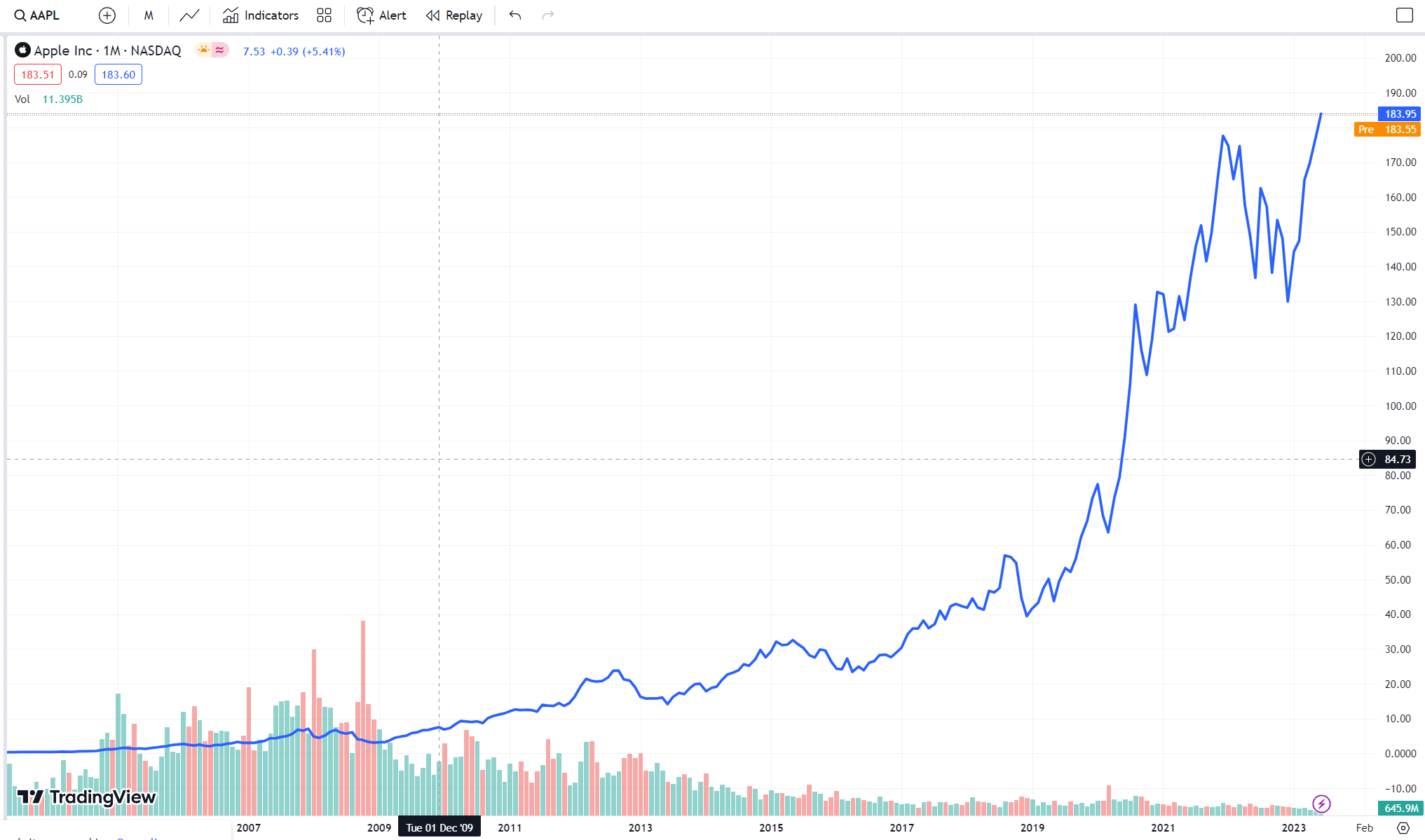Investing in AI: Beyond Hype and Speculation


Keep Calm and Rely on Data while Boarding the AI Investment Train
In a world where technology is advancing at breakneck speed, investing in AI (Artificial Intelligence) has become the latest craze for savvy investors hunting for hidden gems in this highly prized domain. With the recent debut of OpenAI’s ChatGPT bot, backed by the tech titan Microsoft (MSFT), it’s clear that AI is making some serious waves. But, hold your horses! Navigating the wild rollercoaster of AI investments requires a cool head and a discerning eye to dodge potential bubbles and hype.
AI (Artificial Intelligence) is all the rage today. Some say it will spell the end of our civilization, others that it will bring enormous future prosperity. It may be hard to believe, but this is not the first we hear something like that. One does not need to go that far – the early 2000s was when the internet was on everyone’s mind. There were wild speculations that companies would abandon the office model in the future, and employees would not commute to the office but instead work from home while increasing productivity and minimizing company expenses. Commercial real estate will collapse, and people will move away from crowded urban areas into suburban and rural areas.
Past predictions that didn’t stand the test of time
The COVID lockdowns in 2020 were the closest the world has ever come to fulfilling those predictions. However, with COVID restrictions lifted, those predictions seem as distant as ever before. Remote work is rarely allowed or encouraged in most industries outside of IT, even though it is quite possible. Moreover, the trend towards urbanization is even more vital than ever before. The global population has increased since 2000, but the percentage of urban population has risen more than rural or suburban.
Was it too extreme of an example? Many anticipated the closure of local branches as online banking became prevalent across all banks. The prevailing belief was to gather donations for the banking officers who were believed to be on the verge of unemployment.
What happened to those soon-to-be unemployed officers? The answer is nothing. Online banking is a service that consumers seem to value, but they still equally value the number of branches a bank has. Who could have known that people love talking to other people and not to a machine?
The importance of statistically significant data in AI-investing predictions
There is a pattern here, and it could be more evident. One virtually needs to see many such predictions before they can emerge. And that pattern is that extreme interpretations of reality (extreme predictions), not substantiated by statistically significant data, do not stand the test of time.
Nothing occurs out of nowhere – nothing just magically appears overnight. Of course, it can, but usually, it does not! In terms of technology – mainly for the same reason why most New Year’s resolutions fail. People are creatures of habits, and those habits practically never change overnight, even if it is in people’s best interest to change.
Yes, the internet could have allowed people to work from home, but no statistically significant data in 2000 supports that claim. And nothing like that occurred. Yes, online banking could have reduced the number of bank branches, but there was no statistically significant data to support that claim, and subsequently, it did not occur.
What is statistically significant data?
Human history is littered with examples of people needing to understand statistically significant data. One of our favorite examples is the Pacific Ocean. After traveling from one end of the Ocean to the other for 30 days, Magellan decided to name the newly discovered Ocean the Pacific Ocean because he encountered ONLY balmy weather.
The world is just patterns that recur. It takes newly born children about 10-15 years before they begin to manifest their talents. How long will it take to understand what AI can and cannot do? Speculating what a young child will become when it grows up is pointless. Why don’t we wait for puberty to occur before we start imagining?
But most investors rush into new companies or technologies to take advantage of the train. However, it could be more evident that the best way to catch a train is to wait for it to stop or at least slow down. While it is theoretically possible to hop on a train while going full speed, this rarely ends well in practice. Indeed, some trains may never even slow down. But more often than not, trains do stop or at least slow down.
Lessons learned from Apple stock (AAPL)
Apple (AAPL) became the stock to own in 2008 with the introduction of the iPhone. The price then was, split-adjusted, around 7 USD. However, it became INVESTABLE in 2015-2016 at 25-30 USD (the P/E ratio dropped to the levels of the broader markets) when Warren Buffett invested 40% of his portfolio into the company. Where is the stock price today? At around 184 USD a share.

Isn’t it safer to wait for the train to stop or at least slow down before we try to catch it?
This is especially true for investors as Facebook ( META) was not the first successful social network – Friendster was. So, it is possible that even if AI is the next NEW NEW THING, the companies that stand to benefit the most have yet to be incorporated.
Let’s keep calm and collect more data on AI.
Get the trading edge you need in today’s markets – sign up for our monthly newsletter featuring in-depth expert analysis, hot market insights, and exclusive trading strategies.
Source:
